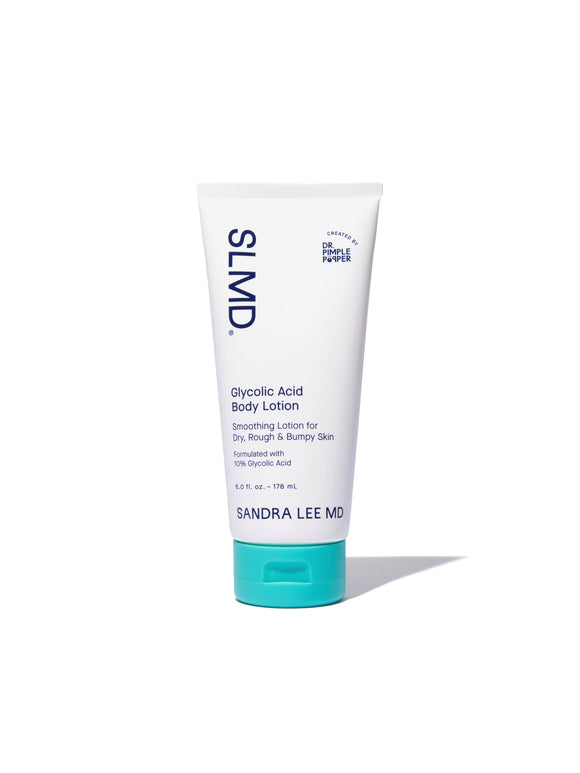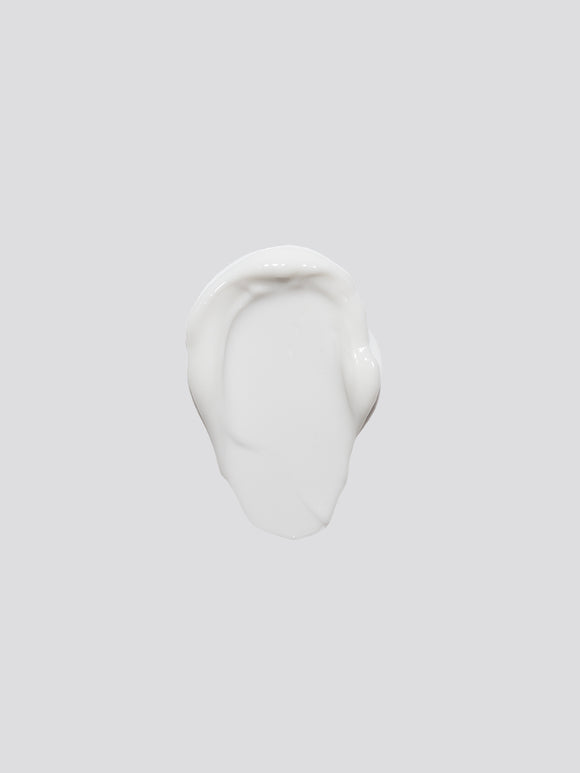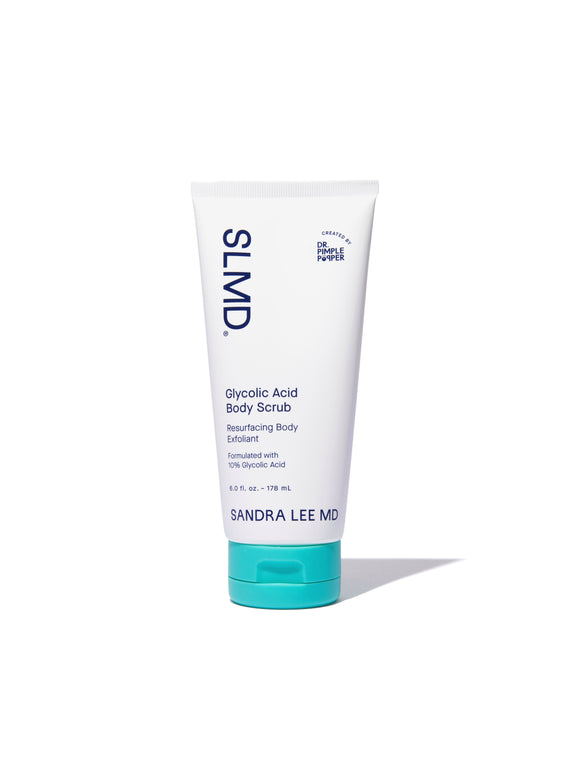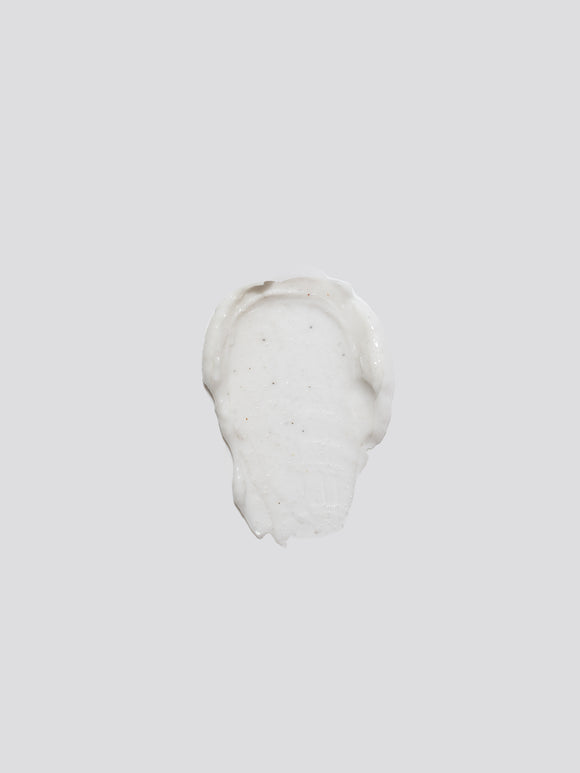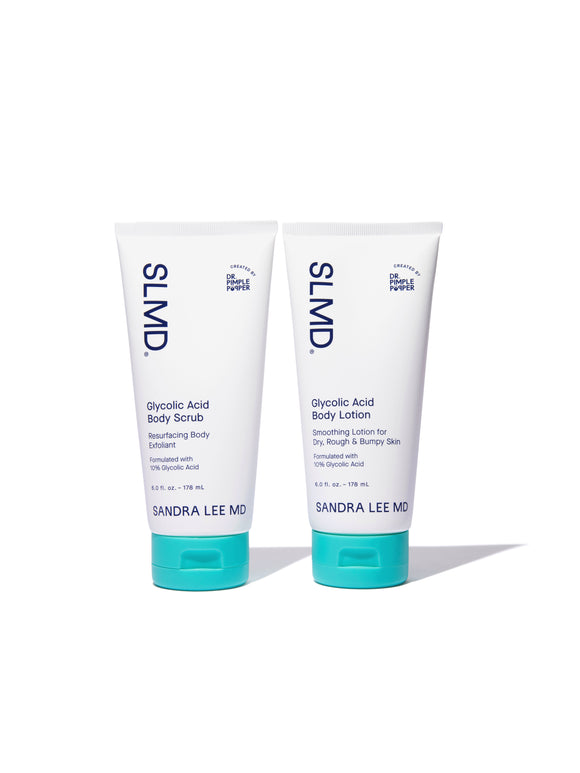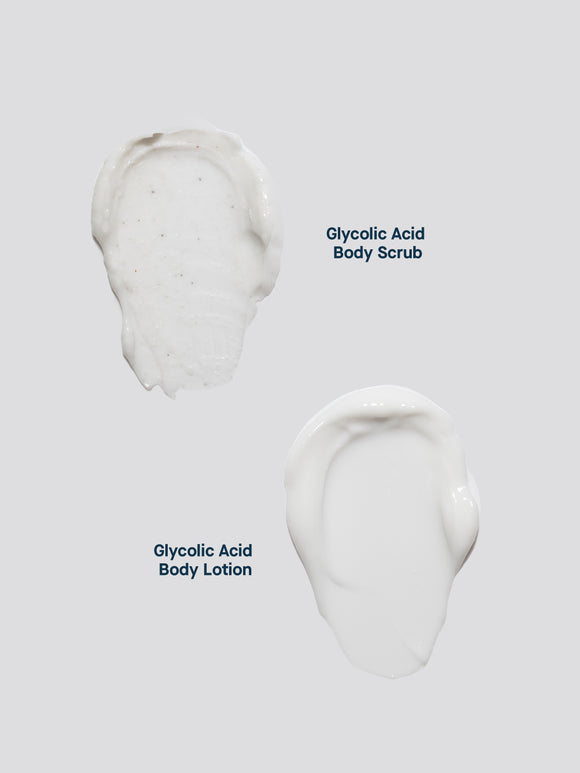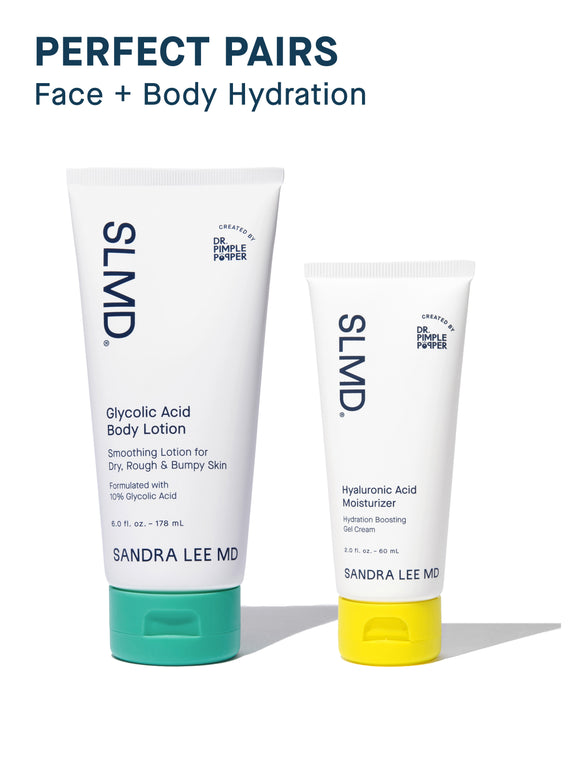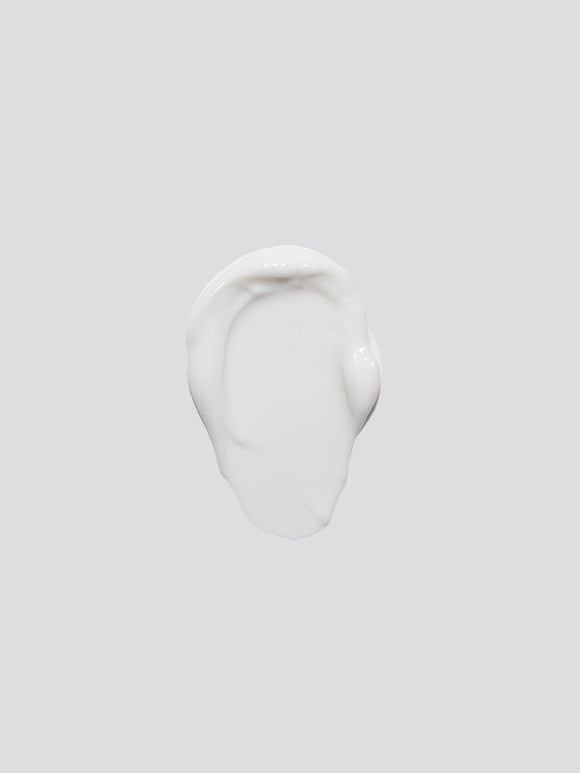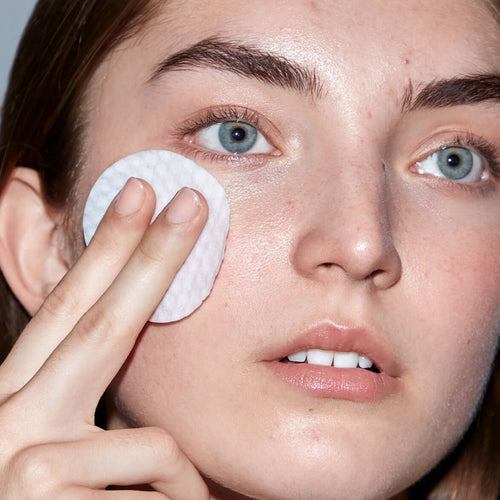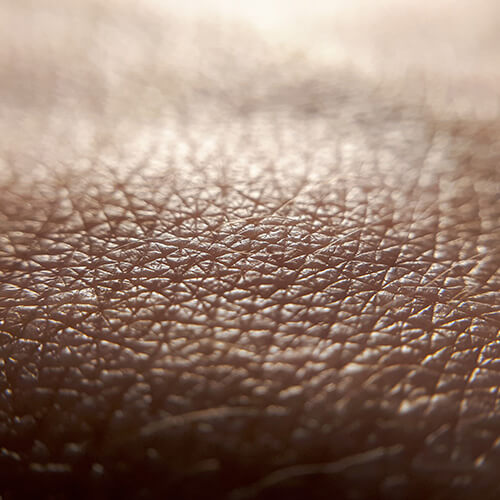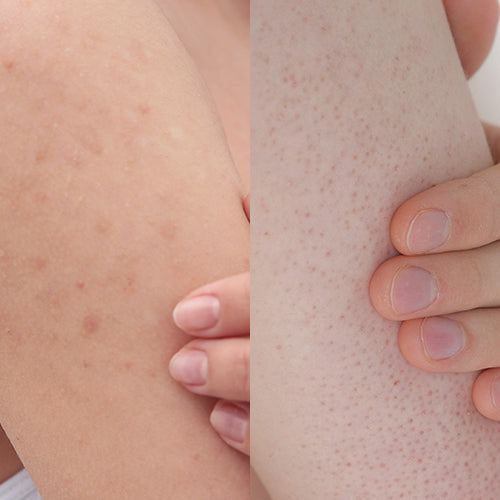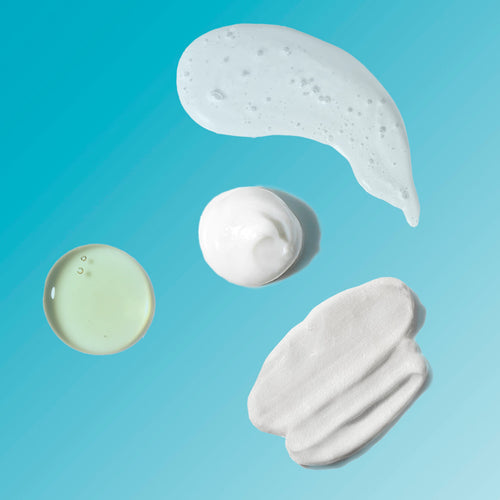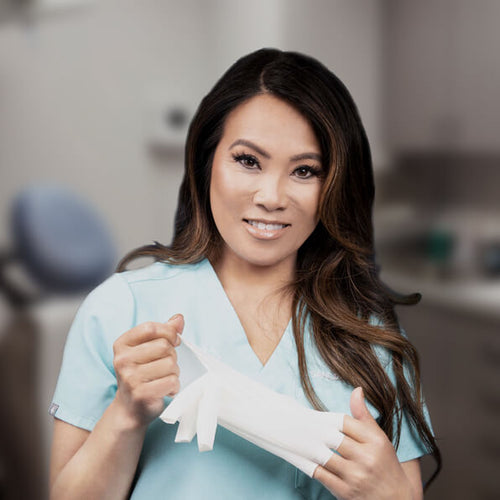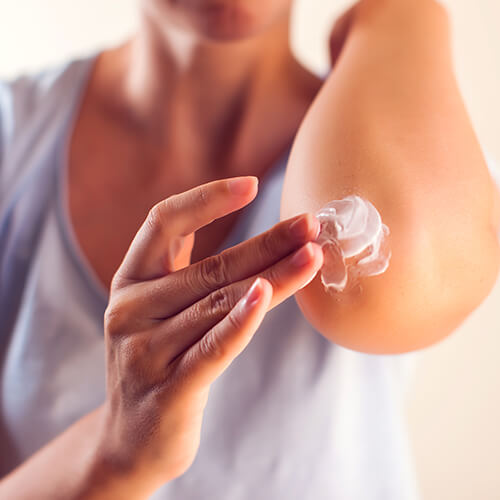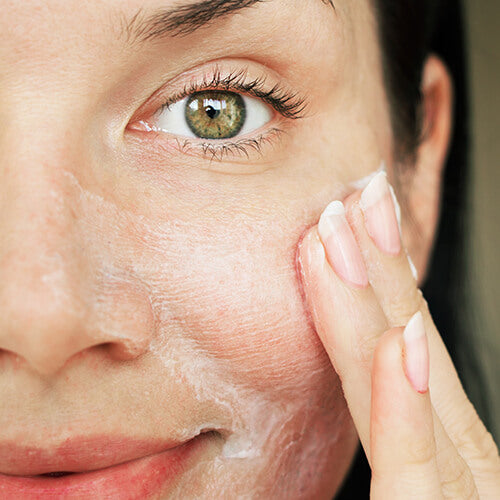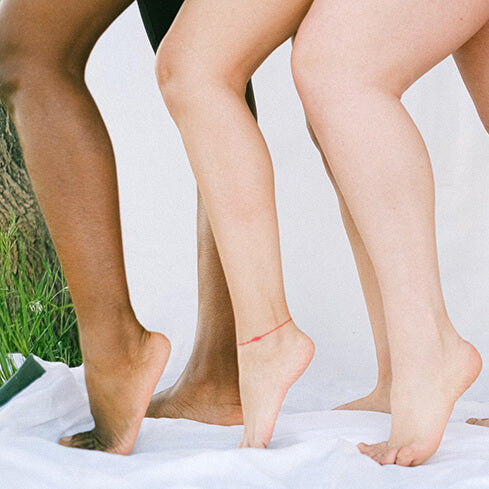
Stop Strawberry Skin: The Easiest Way to Treat Keratosis Pilaris
Dr. Pimple Popper explains what causes KP — and the two-step treatment that smooths and soothes.
Published:
2 minute read
If your skin feels rough and bumpy — like sandpaper or tiny pimples — you’re not alone. Millions of people deal with keratosis pilaris (aka strawberry skin or chicken skin), and while it’s harmless, it can be frustrating. The good news? According to dermatologist Sandra Lee, MD (aka Dr. Pimple Popper), there’s a simple solution that actually works.

What is strawberry skin (aka KP)?
If you’ve got small, rough bumps on your arms, legs, or cheeks — they could be more than dry skin. You might be dealing with keratosis pilaris (KP), also known as strawberry skin or chicken skin. It’s incredibly common, totally harmless, and very treatable.
Keratosis pilaris forms when dead skin and keratin (a protein found in skin and hair) build up and clog your hair follicles. This causes those telltale tiny, red or flesh-colored bumps. While the exact cause isn’t fully understood, KP tends to run in families and is more common in people with dry or sensitive skin.
Learn more about Dr. Lee's perspective on keratosis pilaris here.

Dr. Pimple Popper's Strawberry Skin Solutions
Dr. Pimple Popper’s 2-step method for treating KP
According to Dr. Lee, managing strawberry skin doesn’t have to be complicated. Here is her simple, 2-step solution for managing keratosis pilaris — no dermatologist visit necessary.
Step 1: Gently exfoliate
Use a chemical exfoliant like glycolic acid or lactic acid to break down the keratin blocking your pores. This removes rough, dead skin and smooths the texture.
Step 2: Moisturize
Follow with a skin barrier-supporting moisturizer. Ingredients like hyaluronic acid or niacinamide help hydrate, soothe, and prevent further dryness or irritation.
Dr. Lee’s pro tip: “KP is a chronic condition, so consistency is key. It’s not about scrubbing hard — it’s about treating gently, every day.”
Try: SLMD Glycolic Acid Body Scrub and Glycolic Acid Body Lotion — available together as the Body Smoothing System.
Best ingredients for treating keratosis pilaris
- Glycolic acid: penetrates deep to exfoliate and hydrate
- Lactic acid: gently smooths texture while supporting barrier health
- Hyaluronic acid: draws in water to soothe dryness and irritation
- Niacinamide: calms redness and strengthens the skin barrier
FAQs about strawberry skin
Q: What causes strawberry skin?
A: It’s caused by excess keratin clogging the pores — often in people with dry or sensitive skin. Genetics may also play a role.
Q: Can you permanently get rid of KP?
A: KP can’t be “cured,” but it can be significantly improved with consistent exfoliation and hydration.
Q: How long does it take to treat KP?
A: While individual results vary, most people see noticeable improvement within 4–6 weeks of consistent care.

Dr. Lee's Last Word
KP is frustrating, but it’s also very manageable. My patients are often surprised at how simple the solution is: exfoliate gently and moisturize daily. When you stick with it, you’ll start to see — and feel — a real difference.



